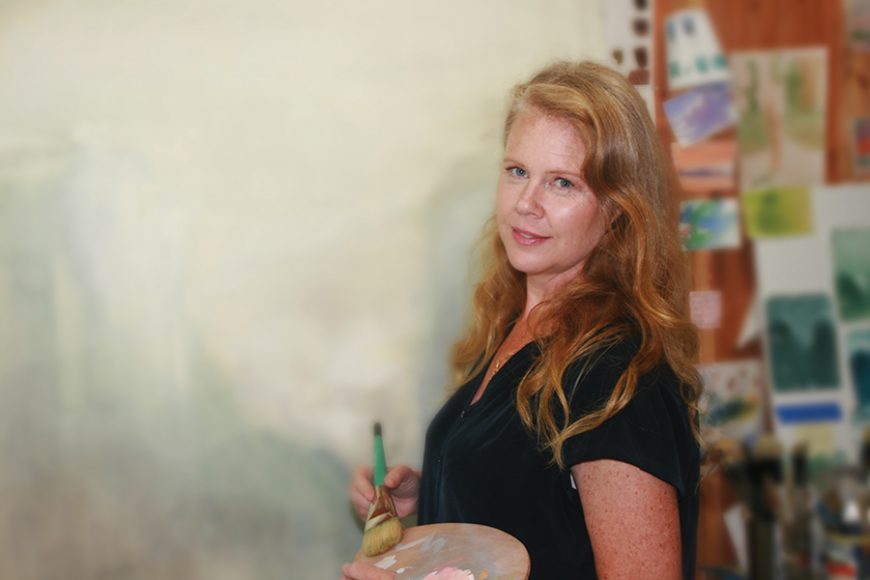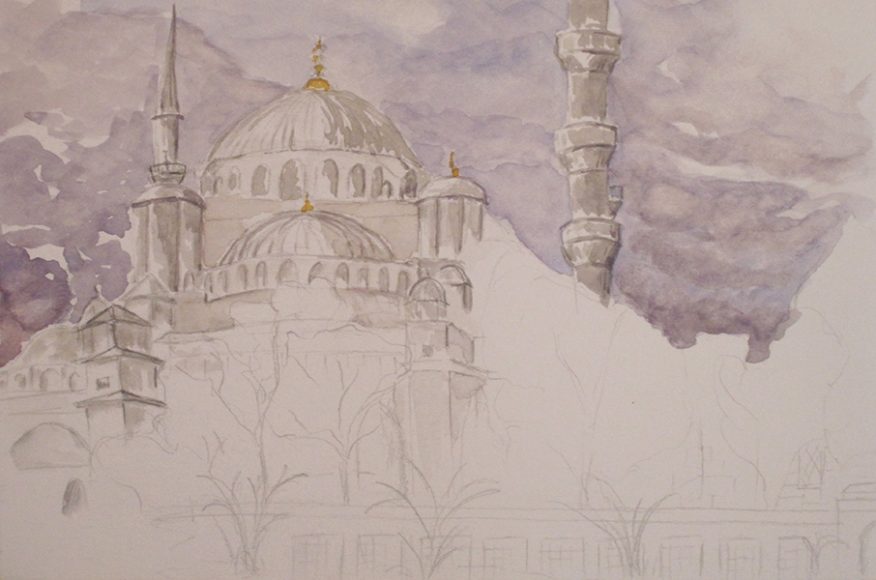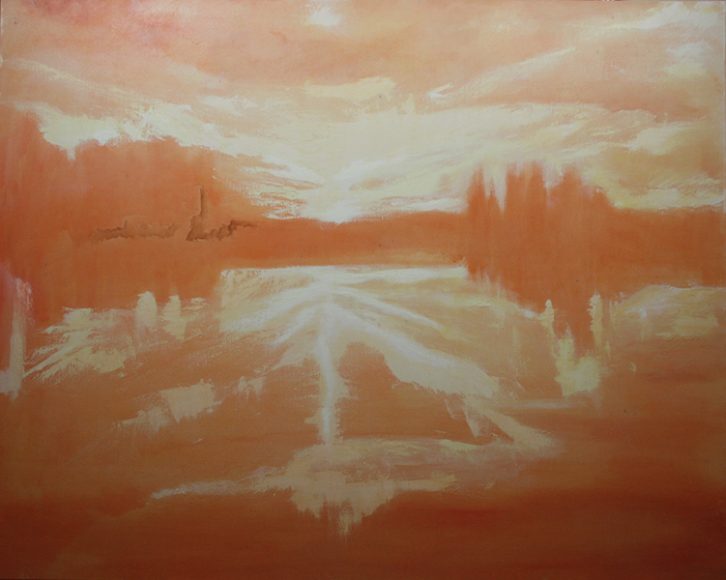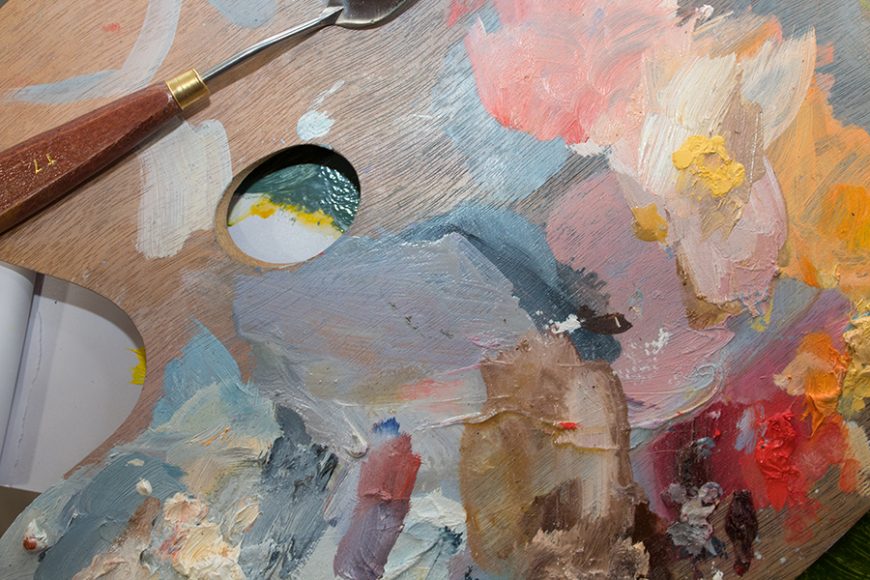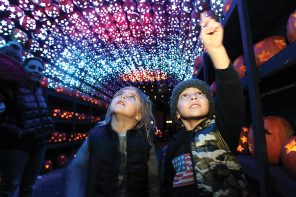Inness Hancock paints not only landscapes in the natural world but her experience in them. She seeks that special connection between herself and her subject, between her paintings and their viewers.
“When that conversation happens between the painting and the viewer,” she says, “that is the definition of art more than anything else.”
Serene and abstract, her canvases are seamless in their richness. “I’m looking for the balance between tranquility and action,” she says. “There’s always a lot of movement in the water or the skies for me. It’s really important to feel like you’re there, to feel the wind on your skin when you’re looking at them.”
Hancock has been awarded an Artist-in-Residence Program grant by the U.S Department of the Interior to travel this fall to California where she will paint in Whiskeytown National Recreation Area and Yosemite National Park for five weeks, making stops in Napa Valley, Santa Barbara and Los Angeles. There she will focus on her series about the national parks before turning her attention to another artist in residence program, at Arte Studio Ginestrelle in Assisi, Italy, in 2018.
She primarily works in series, creating multiple paintings at a time, some taking years to finish. “I get to see the evolution of how I’m thinking about that particular idea through the course of maybe five or six different paintings.” It helps her tackle different kinds of subject matter at once.
Since the time she was scribbling with crayons at the age of 2, Hancock knew she wanted to be a painter. And growing up on the coast of Maine did nothing but drive her artistic passion even more.
“From the time I got my first car, I was ready to go,” she says. From 16 she would drive along the coasts of Maine, New Hampshire and Massachusetts, finding any reason to go hiking or camping.
In her Bedford studio — she also has one at her home in Northeast Harbor, Maine — canvases are stacked against the walls, each containing balanced compositions of line and color. With edges soft and controlled and colors rich and vibrant, the landscapes are as much about feelings as they are about images.
Hancock attended the University of Southern California where nearby Joshua Tree National Park inspired her first series. It consisted of 5-by-8-foot paintings that she set up in the desert, a series that dovetailed with her thesis in philosophy. “A lot of my paintings were more allegorical and narrative then.”
She moved for a time to London, from which she travelled through the English countryside into Scotland, carrying her paints, panels, pastels and chalks. Later on she made her way down to the south of France where she developed a love for marine painting.
“Different palettes work for different locals,” she says. “The light in Scotland is radically different than the hot sun and clear sky on the coast of France. So that was a great education about how to paint with light and with different color tones, color values and temperatures.”
It was during this time that Hancock really homed in on how to paint outside and sell her art on the go. She always travelled with a sketchbook and watercolors “in a very old-fashioned way,” she says. Hancock has painted at 26 UNESCO World Heritage sites since then.
After living in France, Hancock returned to the United States, where she studied at The Art Students League of New York in Manhattan. She was the youngest member to be recommended for membership.
At the College of Charleston, Hancock finished her degree and worked by painting houses, a new form of inspiration. “We had to be out at the houses by 6 a.m., so I would drive from downtown Charleston into Kiawah down the causeway during the beautiful sunrise. It was kind of a nice meditation on my way to work, and then I got to be outside all day.”
Being a landscape painter, it makes sense that her work (and her mood) are seasonal. Fall is a contemplative time for her. The colors are cooler “so the warmth of the colors from the light appearing through the trees appears more vibrant.” Her compositions become still, calm, simple and abstracted.
During the winter, they are the most abstracted as she is in “hibernation mode. Telling a story more through my palette choices than through a linear drawing.”
In spring, she looks again at the shapes of the leaves and sky through the tree branches and that inspires a different kind of artwork. “The colors become lighter and clearer with the seasons, and that often determines how excited the compositions are and how excited the use of my colors becomes.”
“At the beginning of the painting, I love it,” Hancock says, “and at the end I love it. But all that time in between I hate it and it’s like a constant struggle that you have to persevere through. You have to confront your own fear, trust yourself and be OK to not be good at it.”
For more, visit innesshancock.com.

